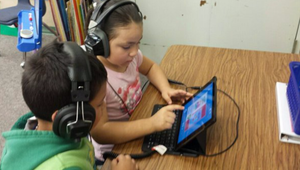
This is the third episode in a series dedicated to technology integration for our youngest students. Click here to view Episode 1: Logins. Click here to view Episode 2: Screen Time. Stay tuned for future episodes of No More Excuses! TK-2. The internet is a scary place. There is no denying the fact that the world wide web contains images, videos, and other forms of media that are inappropriate for developing minds. That being said, the internet also provides opportunity for our youngest learners to access an infinite amount of educational content, respond to this learning experience via physical and/or digital means, and document their learning through digital portfolios. How do we find a proper balance? How do we maintain safety for our youngest students while ensuring they have access to the opportunities available via the world wide web? Fortunately, there are a variety of platforms and strategies we can use to ensure online safety while encouraging young learners to actively engage in content consumption and creation.
Research in TK-2
While I would not recommend that our youngest students go straight to Google’s search bar to conduct research, the act of research is a valuable activity from which all students can benefit. The act of research requires students to think critically as they access multiple resources, identify relevant information, and synthesize their learning in a separate location. What does this look like for our youngest students? Consider the following options for safely engaging our youngest learners in research based activities. Using the strategies and platforms below, students can safely access content and then document their learning digitally or on paper.
Teacher Curated Resources
Students in grades as young as pre-kindergarten can safely access resources that their teachers have curated beforehand. These resources can be included in a variety of multimedia formats including videos, developmentally appropriate texts, educational websites, and images related to the topic at hand.

Google Slides
A transitional kindergarten team of teachers created a slidedeck in Google Slides for their students, complete with links to e-books and YouTube Videos. Because the resources were created as links within the slides presentation, students were able to research the topic at hand (insects), using resources that had been previously curated for safety and developmental appropriateness by their teachers.
Padlet
Consider a second example provided by a team of kindergarten teachers who wanted their students to research the lives of butterflies.

The teachers created a Padlet with pre-curated resources that aligned to their learning goals for their students. Students can access the Padlet as a link in Google Classroom or via a QR code. If so desired, Padlet settings can be created to ensure that students are able to access, but not edit or add to the Padlet page. Visit www.padlet.com for more information about this resource.
Epic Books
Looking to provide students with access to a library of e-books centered around a particular topic?

Consider creating an account with Epic Books, free to educators. Using this free database, teachers can create customized collections from over 25,000 e-books, videos, and quizzes. Many of the e-books can be read to students aloud, scaffolding our students who are pre-readers. Visit www.getepic.com to sign up for an educator account.
YouTube
Looking to safely share YouTube videos with your students? Many teachers have noticed that the minute we send young students to a URL directly on YouTube, their learners are distracted by suggested videos on the sidebar. Still others note that when students open a YouTube video that has been attached via a Google Classroom post, another video plays directly after the first video. Consider the following option: YouTube videos can be inserted directly into a Google Slides presentation, allowing students to not only watch a single video outside the YouTube website, but also increasing rigor and accountability by providing an additional slide on which students respond to the video with a synthesis of their learning. The example pictured has been used in many first grade classrooms, sent to students as an assignment in Google Classroom. Teachers use the “Make a Copy for Each Student” option to ensure that each learner has an opportunity to not only view the video, but to also respond with their learning. The first slide of the assignment contains numbered directions, complete with arrows and circled directions to increase accessibility for ALL students.

But wait, it gets even better! When inserting a YouTube video into Google Slides, video options are available. Right click on the inserted video and you will have the ability to crop it as desired to best meet your instructional needs. Click here to view a tutorial video to learn to insert a YouTube Video into Google SlidesClick here to view a tutorial video to learn to create an assignment in Google Classroom with the options Make a Copy for Each Student
Young Students as Researchers
Our youngest students need you. They deserve the opportunity to develop research skills in a safe environment. Create curated opportunities for these young learners to engage in active research. We must not allow fear to dictate the activities of our students. Instead, let us build safe places for students to explore learning.
